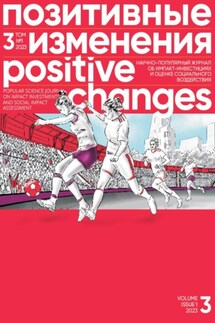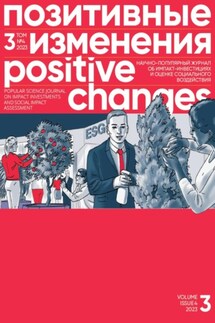Позитивные изменения. Том 3, № 2 (2023). Positive changes. Volume 3, Issue 2 (2023) - страница 12
The researchers carefully selected specific actions performed by the characters as behavioral indicators for motive attribution. For each character, they chose the actions and deeds that vividly characterized them. After viewing the movie, the respondents were presented with a list of 54 motives, including love, desire for approval, and acting out of a sense of duty. They were asked to rate the extent to which each motive from the provided list could serve as a reason for a particular action, on a scale of 1 through 6.
It is widely acknowledged that actions can be driven by multiple motives of varying significance. To capture this complexity, the respondents assigned points to complete a comprehensive matrix attributing motives to actions.
By employing factor analysis on the collected data, distinct motivational patterns emerged for each character. The strength of each motive cluster represents the prominence of specific groups of motives in shaping the characters’ behavior, as perceived by the participants. It is important to note that not all listed motives necessarily underpin the behavior of every character. For instance, in the case of Tolstoy, motives such as “material interest,” “career aspirations,” and “thirst for knowledge” do not align with his behavioral motives (Petrenko, 2014).
Equally promising are the avenues related to assessing the impact of cinematic works.
A comprehensive review of scientific literature from the past decade reveals the extensive utilization of psychosemantic analysis in the realm of film studies. This approach has been applied to various aspects of cinematography, ranging from the examination of texts produced by diverse linguocultural communities (Vinnikova, 2008) within an intercultural context (Baranskaya, Vershinina, 2010), to the exploration of cinema as a manifestation of national consciousness and an integral part of national culture. Additionally, studies have focused on determining the subjective appeal of positive and negative characters (Korobova et al., 2018; Korobova, 2019), interpreting characters’ behavior during conflicts (Markina, 2010; Sobkin et al., 2007; Kirakosyan, 2007), investigating media violence and its connection to viewers’ personal characteristics (Dorfman & Zubakin, 2013), as well as exploring the viewers’ ego-identity (Askerova, 2017). These examples represent only a fraction of the wide-ranging topics that have been explored through the lens of psychosemantics in recent years.
Equally promising are the avenues related to assessing the impact of cinematic works. The sophisticated and remarkably precise tool of psychosemantics enables the reconstruction of individual meaning systems and provides a nuanced description of the viewing experience, surpassing the capabilities of traditional survey methods, including in-depth interviews.
These endeavors signify that Viktor Petrenko, along with his colleagues and collaborators, have an abundance of research ahead and numerous prospects for new discoveries.
Lastly, we would like to share a personal anecdote. On one occasion, Viktor Petrenko delivered a lecture to students at a renowned South Korean university as a visiting professor. The lecture was delivered in Russian, with Natalia Gladkikh, who taught a course on advertising effectiveness evaluation, translating it into English. Following the class, Professor Petrenko presented some of his books to the most enthusiastic students, one of whom eagerly sought an autograph. Upon receiving the book adorned with the coveted signature, the student exclaimed, “I am destined for prosperity! I firmly believe Professor Petrenko will win a Nobel Prize soon, and I will have a book bearing his autograph.”









